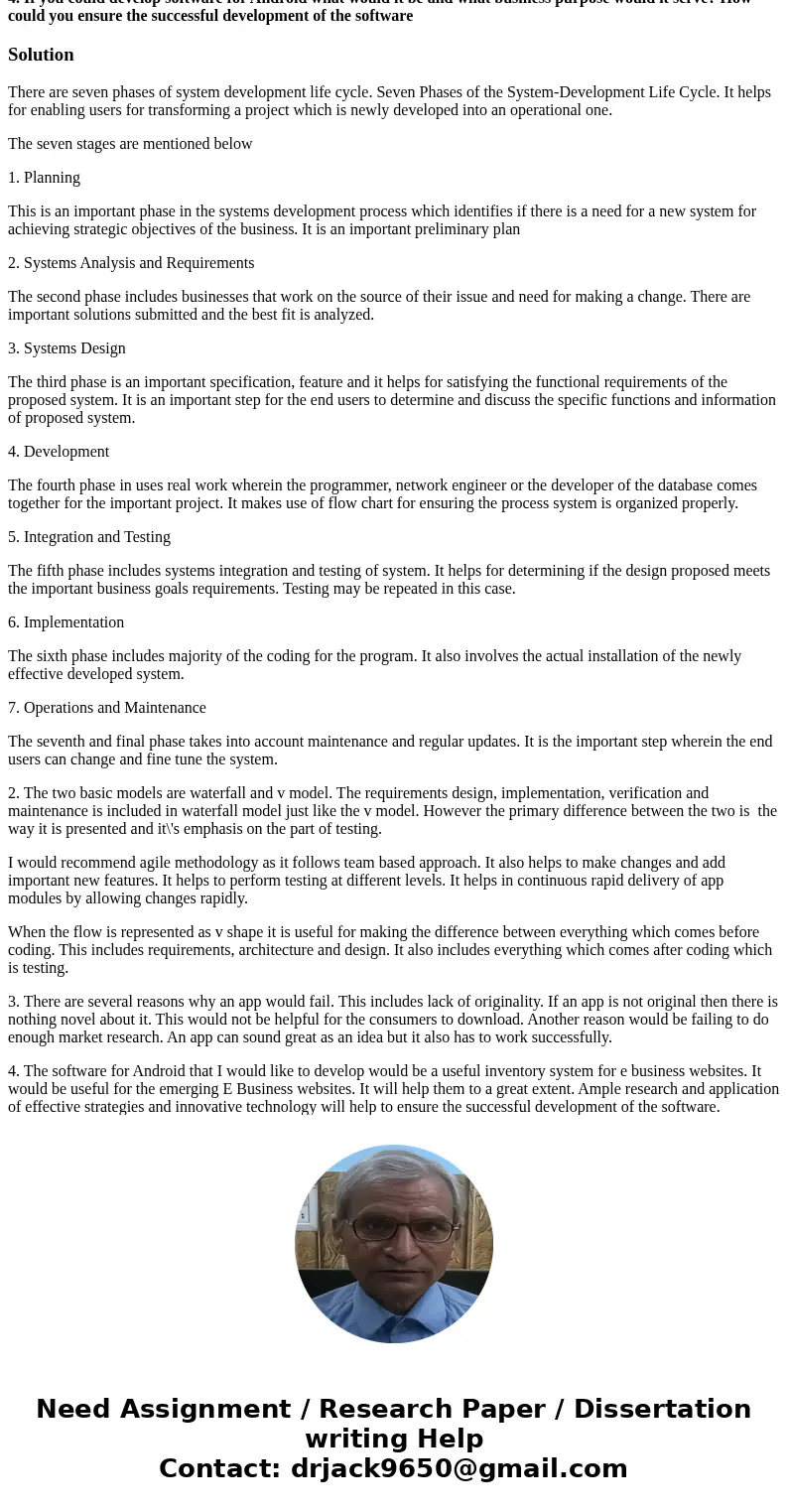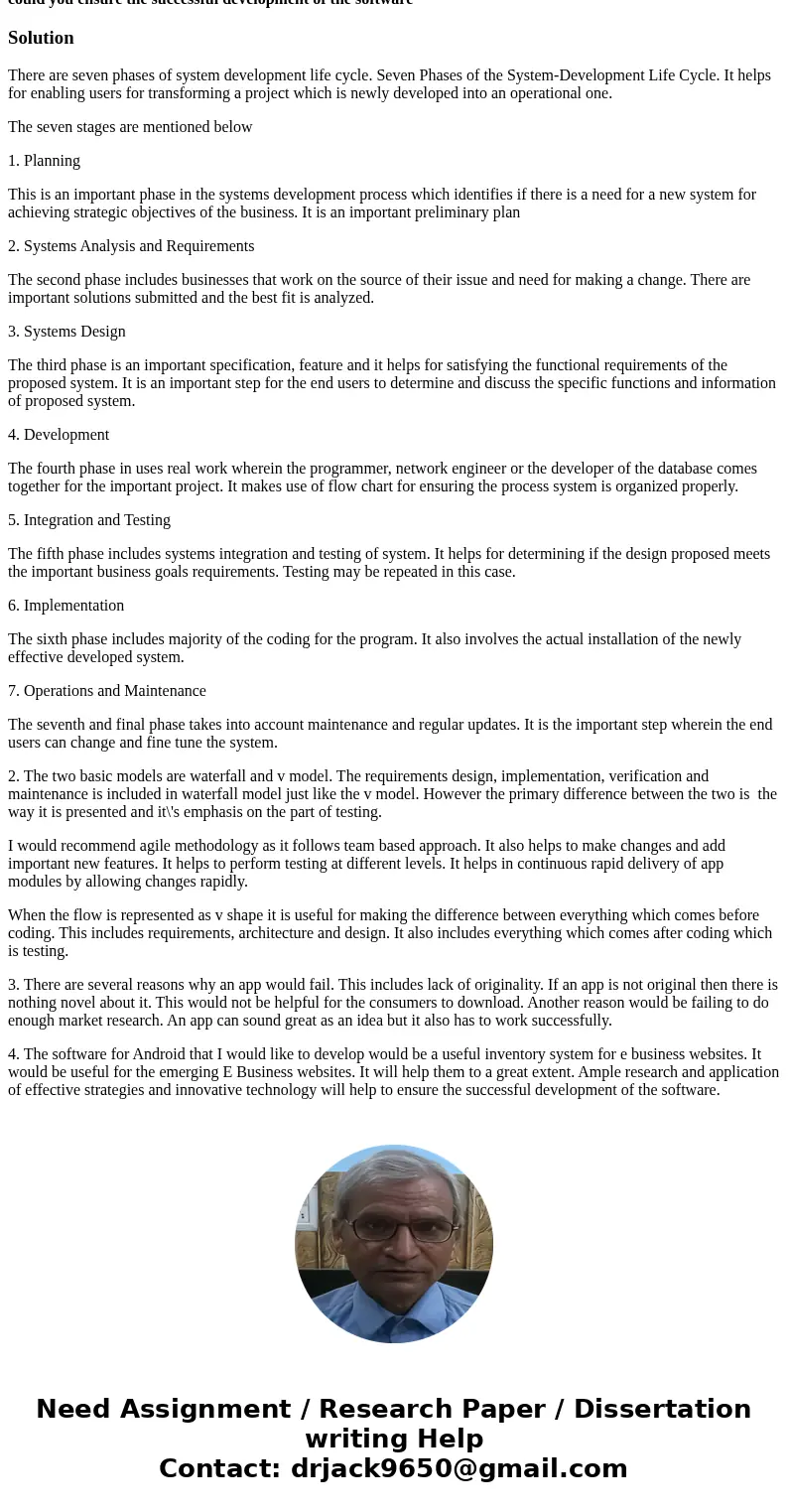Software Developing Androids Android the Googledeveloped ope
Software Developing Androids
Android, the Google-developed open mobile phone platform, is a “software stack” development operating system for mobile phones—designed to compete head-to-head with Apple’s iPhone. According to Google, a software stack is comprised of the operating system (the platform on which everything runs), the middleware (the programming that allows applications to talk to a network and to one another), and the applications (the actual programs that the phones will run). In short, the Android software stack is all the software that will make an Android phone an Android phone.
It is also important to note that Android is based on the Linux operating system, and all of its applications will be written using Java. This represents a significant risk to Microsoft and its operations systems. Microsoft states that it is unworried by the prospect of increased competition from Android, based on Linux, a software whose code is freely available via the Internet and developed by programmers the world over. Virtually anyone can download an Android software development kit from Google and write an application for Android. Google and its partners first unveiled plans for the Android operating system as software that would run mobile phones, or Android-enabled handsets, but soon, customers will be seeing Android in a number of other electronic devices. Just ask Mark Hamblin, designer of the original touchscreen for the Apple iPhone, who is now the CEO of Touch Revolution and is tinkering with Android so it can work in a slew of gadgets other than wireless phones including:
A remote control and a touchscreen land-line home phone that will be powered by Android.
Touchscreen menus for restaurants.
Android-based medical devices.
A 15-inch kitchen computer where family members can leave messages for one another.
Additional Android Applications Seeing Android applications developed by the thousands would be excellent news for Google and chipmakers such as Qualcomm and Texas Instruments that have invested in its development and would welcome the chance to sell semiconductors in new markets. But Android ubiquity could cause headaches for Microsoft, which would rather see its own software on a wider range of electronic devices. Currently, there are a handful of electronics manufacturers developing Android-based mobile Internet devices (MIDs).
Designed to Run on Any Device Android applications may have a unique first-mover advantage as they show up in devices such as netbooks or digital photo frames where Microsoft has yet to establish a beachhead. Manufacturers that work with Texas Instruments have already built Android into video and audio players and picture frames. Rival semiconductor manufacturer Qualcomm is helping vendors ready more than 20 Android-based products, including video players and small tablet PCs. Google has not announced plans to market Android for use in nonphone gadgets. While Google did not discuss nonwireless devices when they first started talking about Android, they designed Android to run on any device—from a smart phone to a server—as they had the foresight to design it with bigger screens and chips in mind. Unlike many cell-phone and PC-based operating systems, Android can run on devices powered by a variety of semiconductors with minimal modifications needed.
Competition from Linux W
ith flexibility comes economy. Manufacturers can keep costs low by being able to choose from a wider range of chips. Android software is also free to use, while Microsoft charges licensing fees. And just in case consumers fret that they will not be able to use their favorite Microsoft applications on an Android device, a company called DataViz will soon unveil software that it says will let people open, edit, and send Word, Excel, and Microsoft PowerPoint files. The software will also allow synching between Android and Outlook email.
As potent as it may be, Android faces competition from Microsoft and Linux. One of Android’s creators, Intel recently introduced its own Linux software, Moblin, for use with MIDs and netbooks running its Atom processors. It will be interesting to watch the future of Android.5
Questions
1. List and describe the seven phases in the systems development life cycle and determine which phase you think is most important to an individual developing an application for Android.
2. Identify the primary difference between the different software development methodologies. Which methodology would you recommend an individual developing an application for Android use and why? 3. What are the common reasons why software projects fail and how can an Android developer mitigate these risks?
4. If you could develop software for Android what would it be and what business purpose would it serve? How could you ensure the successful development of the software
Solution
There are seven phases of system development life cycle. Seven Phases of the System-Development Life Cycle. It helps for enabling users for transforming a project which is newly developed into an operational one.
The seven stages are mentioned below
1. Planning
This is an important phase in the systems development process which identifies if there is a need for a new system for achieving strategic objectives of the business. It is an important preliminary plan
2. Systems Analysis and Requirements
The second phase includes businesses that work on the source of their issue and need for making a change. There are important solutions submitted and the best fit is analyzed.
3. Systems Design
The third phase is an important specification, feature and it helps for satisfying the functional requirements of the proposed system. It is an important step for the end users to determine and discuss the specific functions and information of proposed system.
4. Development
The fourth phase in uses real work wherein the programmer, network engineer or the developer of the database comes together for the important project. It makes use of flow chart for ensuring the process system is organized properly.
5. Integration and Testing
The fifth phase includes systems integration and testing of system. It helps for determining if the design proposed meets the important business goals requirements. Testing may be repeated in this case.
6. Implementation
The sixth phase includes majority of the coding for the program. It also involves the actual installation of the newly effective developed system.
7. Operations and Maintenance
The seventh and final phase takes into account maintenance and regular updates. It is the important step wherein the end users can change and fine tune the system.
2. The two basic models are waterfall and v model. The requirements design, implementation, verification and maintenance is included in waterfall model just like the v model. However the primary difference between the two is the way it is presented and it\'s emphasis on the part of testing.
I would recommend agile methodology as it follows team based approach. It also helps to make changes and add important new features. It helps to perform testing at different levels. It helps in continuous rapid delivery of app modules by allowing changes rapidly.
When the flow is represented as v shape it is useful for making the difference between everything which comes before coding. This includes requirements, architecture and design. It also includes everything which comes after coding which is testing.
3. There are several reasons why an app would fail. This includes lack of originality. If an app is not original then there is nothing novel about it. This would not be helpful for the consumers to download. Another reason would be failing to do enough market research. An app can sound great as an idea but it also has to work successfully.
4. The software for Android that I would like to develop would be a useful inventory system for e business websites. It would be useful for the emerging E Business websites. It will help them to a great extent. Ample research and application of effective strategies and innovative technology will help to ensure the successful development of the software.



 Homework Sourse
Homework Sourse